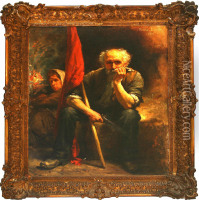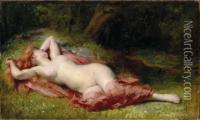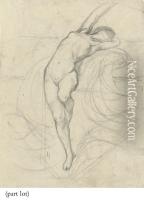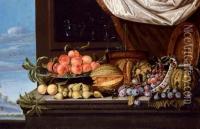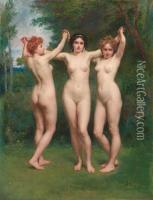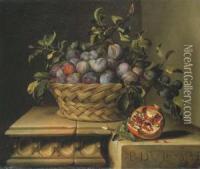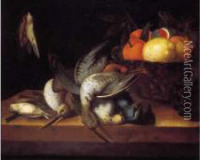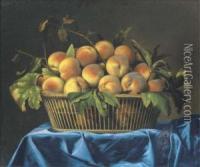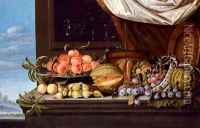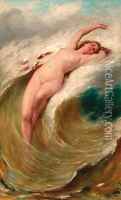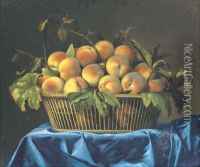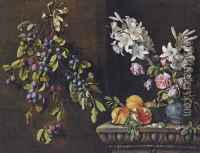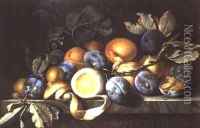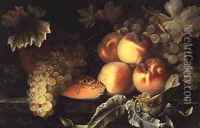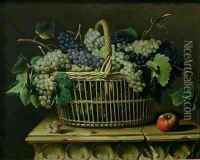Pierre Dupuis Paintings
Pierre Dupuis, also known as Pierre Dupuys, was a French painter who specialized in still-life paintings, particularly those that depicted flowers and fruits. Born in 1610 in Paris, France, Dupuis was part of the Baroque period, which was known for its emphasis on bold, detailed, and realistic portrayals of subjects.
Dupuis received his initial artistic training from his father, who was also a painter. He later continued his studies under the guidance of Simon Vouet, who was a leading French painter at the time and a significant figure in bringing the Italian Baroque style to France. Under Vouet's instruction, Dupuis honed his skills in composition and color, which would become distinctive features of his own work.
Despite the influence of his teacher, Dupuis did not follow the grand Baroque style in his career. Instead, he focused on still lifes, a genre that was gaining popularity in Europe during the 17th century. His paintings often included an array of objects such as fruits, flowers, and sometimes small animals, arranged in a naturalistic yet aesthetically pleasing manner.
Dupuis was not as widely known as some of his contemporaries, such as the still-life painter Jean-Baptiste Chardin. However, his work was appreciated for its meticulous detail and the vividness of its colors. His compositions are typically balanced and harmonious, with a delicate handling of light and shadow that gives life to the inanimate subjects he painted.
Throughout his career, Dupuis exhibited his works at the Paris Salon, the official art exhibition of the Académie des Beaux-Arts in Paris. His paintings were collected by French nobility and art connoisseurs, which helped to establish his reputation as a skilled still-life painter.
Pierre Dupuis's contributions to the still-life genre were significant in the context of French art history. He died in 1682 in Paris, leaving behind a body of work that continues to be studied and admired for its beauty and technical excellence. Although not as celebrated as some of his peers, Dupuis's paintings are an important part of the Baroque era's artistic landscape and offer insight into the development of still-life painting in Europe.

